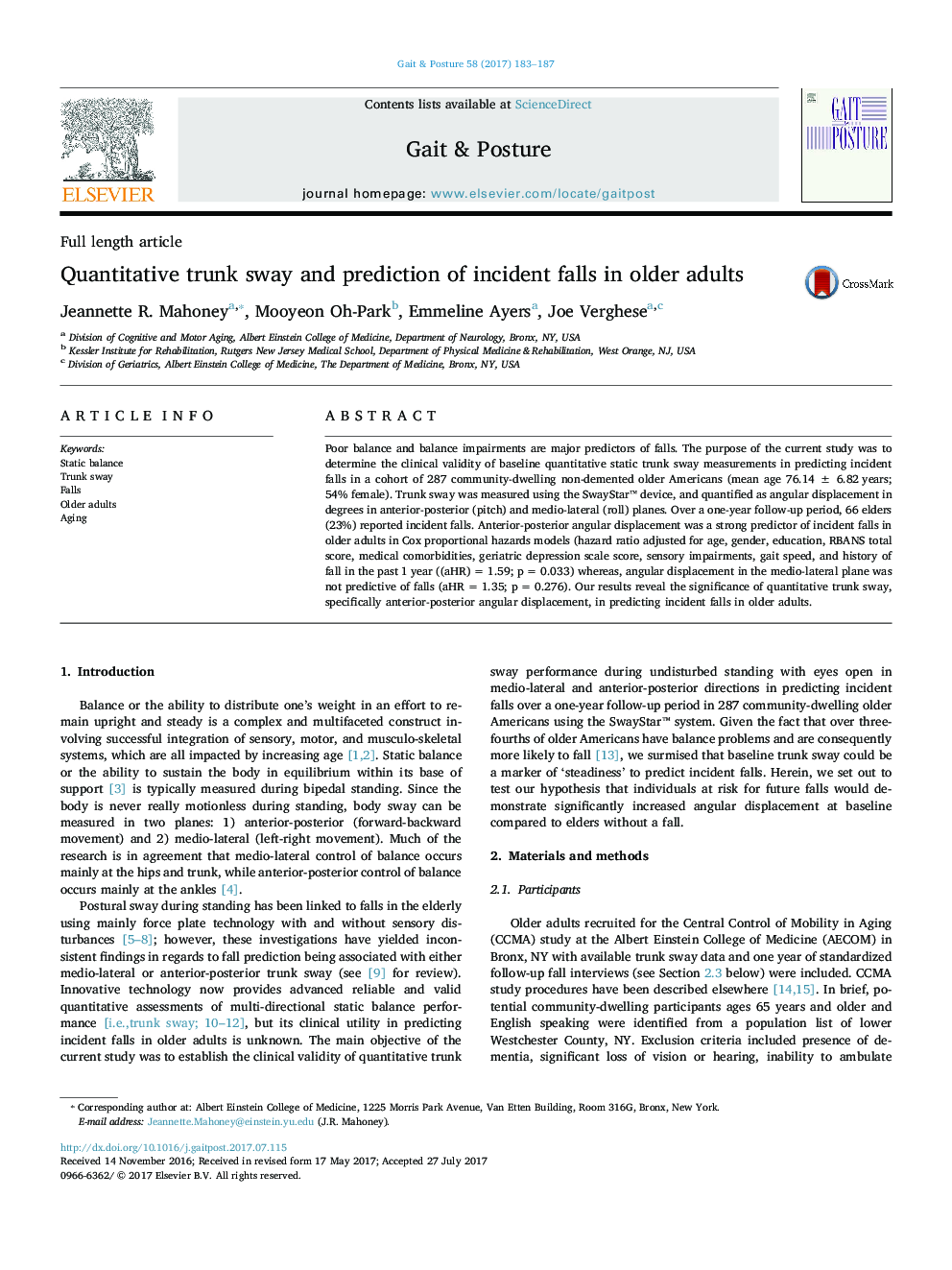| Article ID | Journal | Published Year | Pages | File Type |
|---|---|---|---|---|
| 5707616 | Gait & Posture | 2017 | 5 Pages |
Abstract
Poor balance and balance impairments are major predictors of falls. The purpose of the current study was to determine the clinical validity of baseline quantitative static trunk sway measurements in predicting incident falls in a cohort of 287 community-dwelling non-demented older Americans (mean age 76.14 ± 6.82 years; 54% female). Trunk sway was measured using the SwayStar⢠device, and quantified as angular displacement in degrees in anterior-posterior (pitch) and medio-lateral (roll) planes. Over a one-year follow-up period, 66 elders (23%) reported incident falls. Anterior-posterior angular displacement was a strong predictor of incident falls in older adults in Cox proportional hazards models (hazard ratio adjusted for age, gender, education, RBANS total score, medical comorbidities, geriatric depression scale score, sensory impairments, gait speed, and history of fall in the past 1 year ((aHR) = 1.59; p = 0.033) whereas, angular displacement in the medio-lateral plane was not predictive of falls (aHR = 1.35; p = 0.276). Our results reveal the significance of quantitative trunk sway, specifically anterior-posterior angular displacement, in predicting incident falls in older adults.
Related Topics
Health Sciences
Medicine and Dentistry
Orthopedics, Sports Medicine and Rehabilitation
Authors
Jeannette R. Mahoney, Mooyeon Oh-Park, Emmeline Ayers, Joe Verghese,
